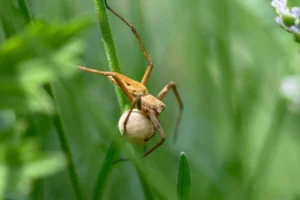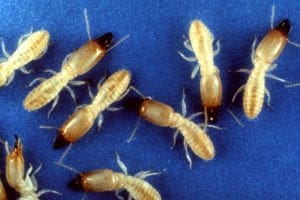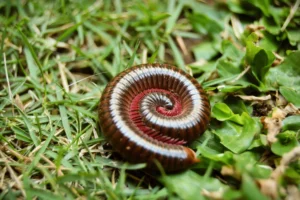
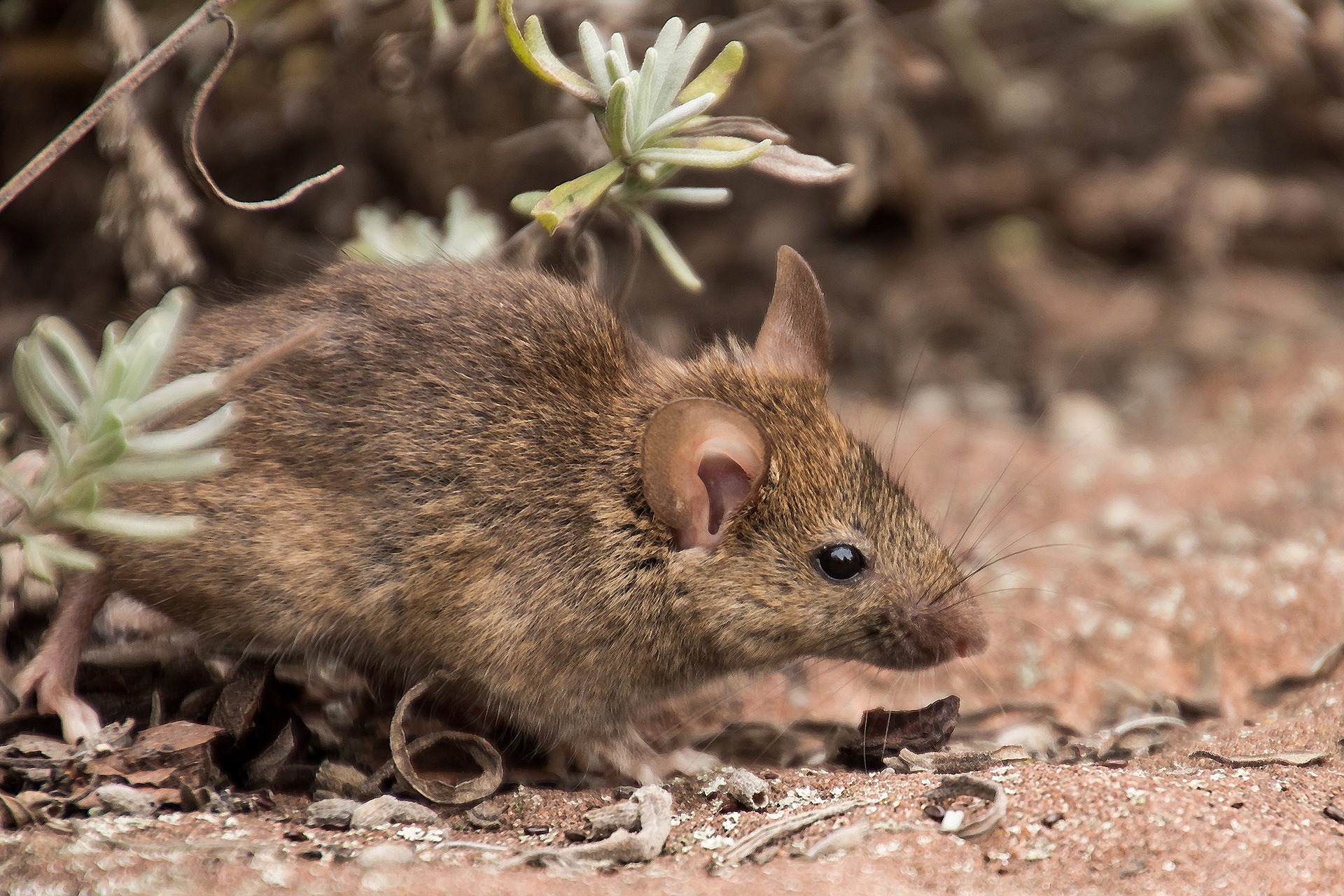
Most property-owners have encountered at least one bug problem during their lifetime, if not more. Certain properties are more prone to infestations than others, and it can sometimes be hard to tell the difference between pest damage and regular wear and tear. The best way to find out if you have a pest problem is by learning the signs of the most prevalent invaders. If you suspect an infestation, there is a good chance that the culprit is one of these 7 common household bugs.


Ants
Millions of households across America dread the yearly appearance of ants in their kitchens. Property owners may see different types of ants depending on where they live, but the most common species are odorous house ants, pavement ants, carpenter ants, fire ants, and pharaoh ants. Most ant species are between 5 and 15 mm long and nest in places like stumps, trees, soil, beneath foundations, inside walls or cabinets, and behind moldings or baseboards. Ants are attracted to food residue and nesting spots. Signs of an infestation include ant mounds outdoors, wings, dead ants, and ants walking around.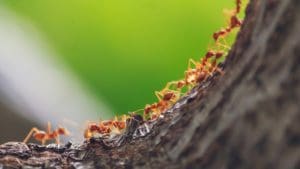
Bed Bugs
Bed bugs are an extremely difficult pest, both to live with and to exterminate. They look like tiny apple seeds that are only ⅜ of an inch, and they are exceptional hitchhikers. They don’t usually transmit disease, but their bites cause red, itchy welts that could lead to an allergic reaction. Plus, they are a little too easy to acquire and nearly impossible to get rid of without the proper methods. Most commonly, they are brought into homes and businesses on luggage, laundry from a laundromat, or even the clothes you’re wearing. After hitchhiking to a new home, they usually hide in the same kinds of areas they were likely picked up from: furniture, linens, clothing, carpets, and other high-traffic areas. They may also hide in picture frames, under wallpaper, or behind baseboards. A bed bug infestation may lead to signs like dark or rusty spots on bed sheets, eggs, exoskeletons, bed bugs themselves, red and itchy welts, and a musty odor.Cockroaches
Cockroaches look a little bit like beetles, but they are much more unsanitary. Of the 30 species that live around human habitats, the most commonly encountered are American, German, brown-banded, smoky-brown, Madagascar hissing, and Oriental cockroaches. Roaches are able to endure a range of climates, but they prefer dark, damp areas like basements, dumpsters, brush and leaf piles, bathrooms, kitchens, sheds, and even sewers. When they crawl around in places like dumpsters and sewers, they gather bacteria on their legs and bodies which they then transfer to clean surfaces like kitchen counters. Needless to say, this can lead to disease, infection, allergic reactions, and even asthma symptoms. Cockroaches seek out dark and damp areas that are close to food and water sources. Outdoor lights tend to draw them in. Once they arrive, they may enter through cracks and crevices, or through sewage pipes. They may also be brought in accidentally on items like cardboard boxes. Signs of a roach infestation include exoskeletons, egg capsules, brownish smear marks, an unpleasant odor, and droppings, which look like black pepper or coffee grinds.Fleas
Fleas have been tormenting household pets for ages. They are tiny, flat, and nimble, and they are remarkably skilled jumpers. They are able to transmit diseases and parasites like tapeworm. They can also cause severe dermatitis and anemia in pets. Fleas may be brought onto a property by pests like rodents and raccoons, or pets may pick them up from outdoor areas. They like to hang out in tall grass, shrubs, and debris or wood piles. Fleas that are living on a pet are probably hiding in the back, neck, and belly areas. Those that have been brought inside by a pet may jump onto another host or onto furniture, pet bedding, carpets, and drapes. Itchy pets are usually the first sign of fleas, followed by flea dirt, jumping fleas, and flea bites on your own skin. If an infestation is severe, pets may experience fur loss or become sluggish, anemic, and agitated.Mosquitoes
We’re all familiar with the buzzing noise of a mosquito on its way to ruin a fun time. These blood-sucking pests appear in droves, especially in hot, humid environments. Mosquito bites are a serious nuisance, not to mention they can become infected or allow for the transmission of pathogens. Mosquitoes are known to carry a number of rather dangerous diseases like encephalitis, Zika virus, and West Nile virus. They love properties that have an abundance of stagnant water where they can lay eggs. They also look for vegetation to rest in during the hottest hours of the day. You’ll know you have a mosquito infestation if you hear a constant buzzing sound, receive multitudes of bites, or see mosquitoes hovering indoors and out.Rodents
Rodents are a familiar enemy to many property owners, especially owners in colder states like New Jersey. The most frequent rodent invaders are rats, mice, squirrels, chipmunks, moles, and voles. Rodents carry a number of diseases, bacteria, and parasites, and their daily activities cause extensive damage to wires, insulation, wood, lawns, gardens, and more. They like to live in attics, basements, crowded storage rooms, vehicles, sheds, dense grasslands, wood piles, trees, or underground burrows. Rodents will move onto properties that provide food and shelter from the cold. In Northern states, infestations increase during the fall and winter months because rodents are desperate to escape outdoor conditions. If you think you have rodents on your property, keep an eye out for droppings, grease marks, signs of chewing, scratching noises in walls, vole trails in lawns, tunnel openings, and rodents themselves.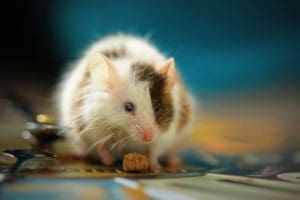
Termites
Termites are sneaky pests who usually cause a great deal of structural damage before being discovered. The three different types of termites are attracted to different food sources and nesting locations. Dampwood termites eat and nest in damp, water-damaged wood. Subterranean termites also eat water-damaged wood, but they live in soil. Drywood termites eat and live in dry wood. Termites usually enter buildings by way of cracks in the foundation or wood that is exposed to the outside. They are also frequently brought indoors on used furniture, outdoor furniture, or firewood. Some signs of termite activity are hollow-sounding wood, sagging floors and ceilings, bubbled wallpaper, newly squeaky floorboards, pinpoint holes in drywall, droppings, mud tubes, piles of wings, and swarms of termites.Pest Prevention Tips
-
- Seal all possible pest entryways, like cracks in foundations and walls, gaps around windows and doors, and utility wire entrances
-
- Keep vegetation trimmed away from the exterior of your home or business
-
- Keep firewood at least 20 feet from your home or business
-
- Eliminate standing water and debris piles
-
- Landscape with plants that your problem pests dislike
-
- Empty garbage cans regularly and make sure all outdoor garbage receptacles have tight-fitting lids and drainage holes
-
- Promptly clean up spills and food residue
-
- Store food in air-tight containers
-
- Minimize clutter, indoors and out
-
- Promptly fix leaks and clogs
-
- Vacuum and dust regularly
-
- Replace or repair water-damaged wood
-
- Thoroughly check furniture, luggage, clothing, pets, and family members for any hitchhiking pests before returning indoors




